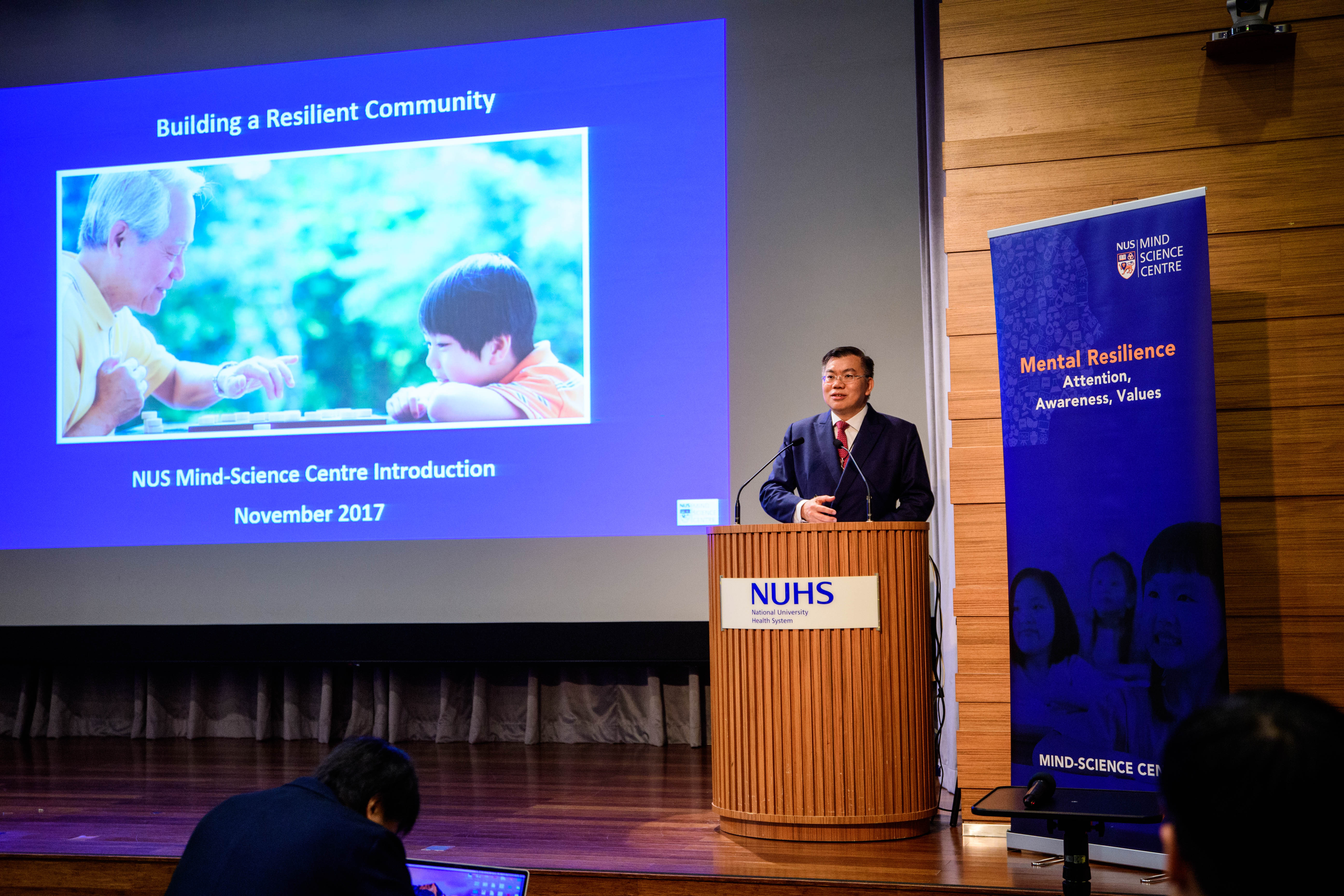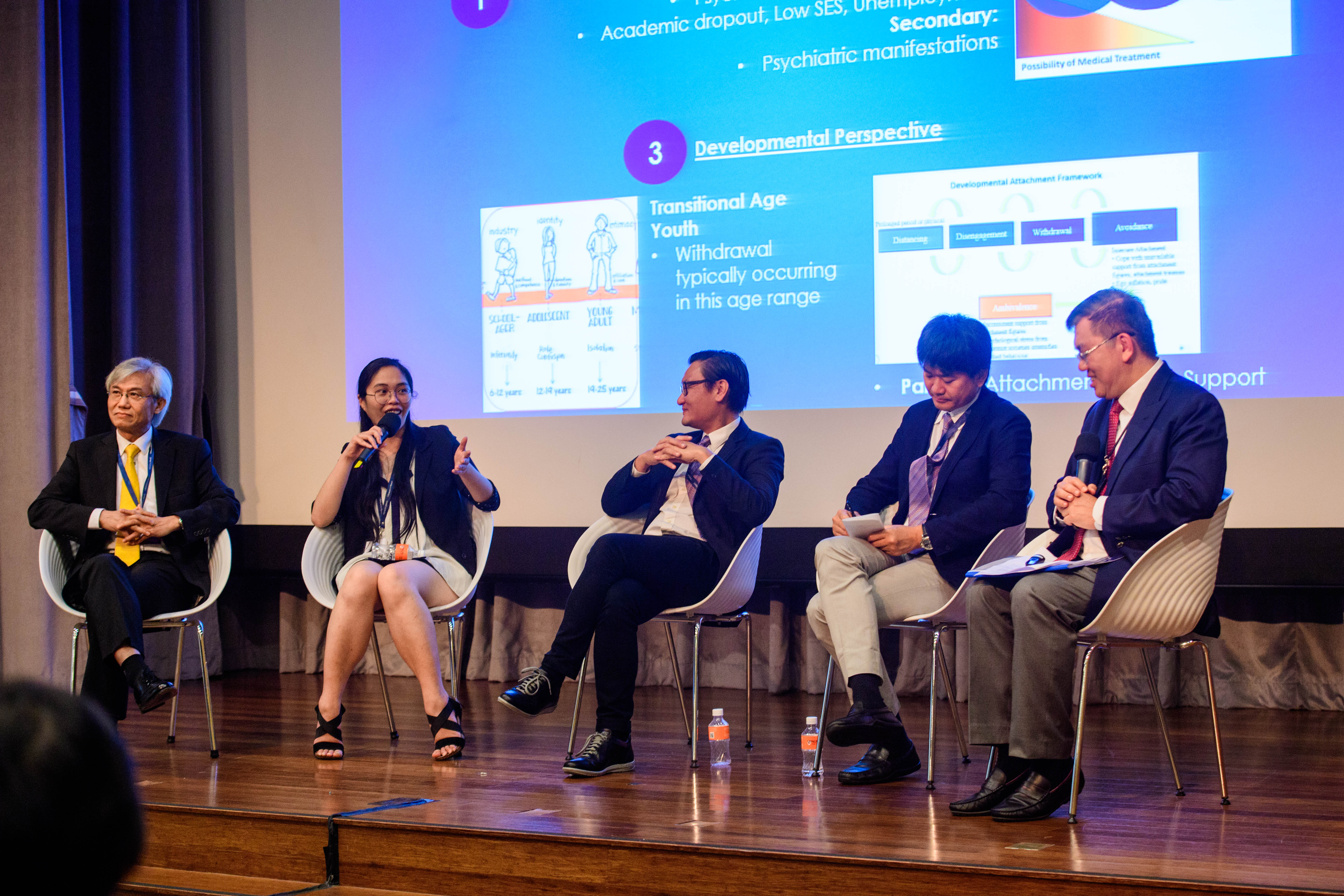Hikikomori – Hidden Youth is an evolving syndrome affecting late adolescents and young adults, presenting with features of social withdrawal, isolation, depression, social anxiety with psychosocial impairment and internet gaming addiction, which is estimated to affect 1.6 percent of youth globally, especially in Asian cities like Japan, Hong Kong, China and Singapore.

With over 100 youth mental health care professionals turning up for the inaugural symposium held at the NUHS auditorium on 23 November, the speakers and organising committee are especially delighted with the event’s turn out. The strong appeal towards understanding the Hikikomori phenomenon makes the event unique and relatable for the workers in the youth mental health care scene. During the symposium, attendees shared their opinions and thoughts for consideration of this interesting and evolving phenomenon.
The Mind-Science Centre is pleased to have invited a line-up of speakers, representing thought leaders from academia, including A/Prof Kato Takahiro (Kyushu University), Prof Lo Tit Wing (City University of Hong Kong), Dr Gloria Chan (Caritas Institute of Higher Education) and A/Prof Paul Wong Wai Ching (Hong Kong University). The symposium is a concise summary of the thoughts that were exchanged in the full day Round Table Discussion on the day before, where there were in-depth discussions between the experts that venture into the nature, scope, and ramifications of this evolving epidemic of social isolation in youth.

In the first session, A/Prof Takahiro Kato brought the attendees through the definitions and multidimensional understandings of Hikikomori and Hidden Youth, and shared his recent research findings regarding Hikikomori. Based on self-administered questionnaires, his research team has revealed that most cases of Hikikomori involved feelings of isolation, functional disability, and a desire for treatment.
Click here to download Prof Kato’s slides.

This was followed by a sharing by Prof Lo Tit Wing on the aspects of Hidden Youth in Hong Kong. Based on a research study done by his research team and collaborators, the longer the youth has been socially withdrawn, the better quality of life the youth themselves perceive to have. He also explained that the hidden youth in Hong Kong are subjected to negative connotations like “Double-loss”, “Three-lows”, “prone to psychological disturbance”, “internet addicted”, and “socially-isolated”. The session was concluded by short sharings from Assistant Prof Lee Jungup who shared about the phenomenon in South Korea, and Mr Ray Chua who shared about his experiences with the hikikomori cases in Singapore.
Click here to download Prof Lo, Dr Lee, Mr Ray’s slides.
After a networking tea break, the audience were treated to a stimulating session by Dr Gloria Chan, who talked about introducing interventions via the online gaming platform, which the youth are familiar with. It is believed to help the youth rebuild their sense of self, achieve empowerment, by engaging their interests, and helping them exert their capabilities.
Click here to download Dr Gloria’s slides.

In the final presentation, A/Prof Paul Wong introduced an interesting multicomponent pilot programme that was carried out by his team, which includes animal-assisted therapy (AAT). The qualitative data collected through interviews with ten participants reflected that the AAT component was attractive because the non-human animals made them feel respected and loved. This study also showed that such a programme with a case management model, correlated with increased levels of self-esteem and perceived employability, and a decreased level of social interaction anxiety.
Click here to download A/Prof Paul’s slides.

The half-day symposium was concluded by a final session of panel discussion, whereby the invited speakers discussed about the outcomes of such interventions, particularly in Asian countries. Some of their discussions included on the various strategies that was shared, and how these programmes or interventions could help to contain the situation or provide a new dimension and focus for the hidden youths in shaping their future.
At the end of the day, the speakers and attendees reached a consensus on the definition and intervention strategies for this group of hidden youth. We hope that this symposium is a starting point for exploring avenues for future collaboration with the agencies and youth groups that are interested in the development and mental well-being of our youths, who are the backbone of our nation’s future.

